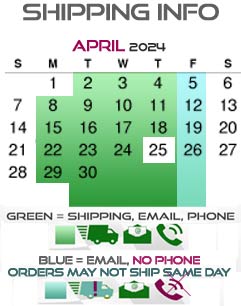GUIDE - Which one is best? Dry Clutch or Torque Converter?
GUIDE - Which one is best? Dry Clutch or Torque Converter?
GUIDE
Determining the best drive solution for your project
One of the things I'm constantly asked is why a particular customer's dry centrifugal clutch has failed. I've decided to write an informative guide to help understand the differences between Dry Centrifugal Clutches and Torque Converters and help determine which one is best for your application. In this guide, we'll discuss the basic operation of each as well as the pro's and cons. We'll also discuss the benefits of each and limitations of a centrifugal clutch.
CONTENTS
1. Dry Centrifugal Clutch operation
2. 2. Torque Converter Operation
3. What causes failure in power transmission systems?
2. 4. What can I do to reduce the heat in my transmission?
5. What if I can't get a short enough ratio or the ratio needed for my Dry Clutch to not overheat has too low a top speed?
2. 5b. Example - 14" rear wheels & 1" Clutch Engine
2. 6. Should I use a Torque Converter or Dry Centrifugal Clutch?
2. 7. Conclusion
1. Dry Centrifugal Clutch operation
Learn how to install a Dry Clutch by CLICKING HERE
Basic dry centrifugal clutches run a very simple method of power transfer. This makes them incredibly inexpensilve - one of their major pros. Both our popular entry level stock clutch (such as the CLC3512) and our GT clutch (such as the CGT3512) both emply this technology slightly differently, but the concepts are the same.
The clutch comprises of three main pieces:
- The outer drum (and drive sprocket)
- The friction material & arrestor spring(s)
- The transmission plate & central shaft. (central shaft not shown. Picture below shows friction material and spring installed)
In the picture above you can see the friction material installed onto the transmission plate. You can see the transmission plate splines in the centre of the plate. The central shaft (not shown) slots into these splines and slides onto the crankshaft of the engine. It rotates with the engine because it is keyed and the key slots into the keyway on the crankshaft.
The drum sits over this material and is large enough so that the material does not contact the drum when it is fitted. You can rotate the drum freely when the unit is assembled as the friction material does not contact the drum.
As the speed of the crankshaft rotation increases (RPM increases) there is more and more centrifugal force on the friction material.
The spring holds them together in a tight circle and they do not touch the drum.
As the force pushing the friction material away from the centre increases to a point that it is greater than the force applied by the spring, the friction material starts to move outwards and contacts with the drum.
This begins to happen somewhere between 1500rpm and 1800rpm on the standard DRY CLUTCHES. At this point, the drum is still slipping on the friction material because the amount of force is not great enough to overcome the friction from the back wheels. The more weight, the more friction. When the drum slips, it creates heat. This is the biggest CON for the Dry Centrifugal Clutch.
NOTE: DRY CLUTCHES SHOULD NOT BE IDLED!
ONE MORE IMPORTANT THING TO NOTE IS THAT AFTER THE FIRST USE, SOME HEAT WILL INEVITABLY BE TRANSFERRED TO THE SPRING AND IT WILL STRETCH SLIGHTLY. FROM THIS POINT ON, AT IDLE, THE CLUTCH WILL SLOWLY BEGIN TO ENGAGE AT IDLE SPEED - THE HIGHER THE IDLE SPEED, THE MORE THE ENGAGEMENT WHICH WILL ACCELERATE WEAR.
At 2000rpm the friction material has so much centrifugal force applied to it that the spring can no longer arrest the material and it completely contacts the drum. This is considered it's FULLY ENGAGED rpm. Power is now transmitted directly through the chain to the rear drive sprocket and no further heat is created.
2. Torque Converter operation
Learn how to install a Torque Converter by CLICKING HERE
Basic TAV torque converters run a simplified but more complex method of power transfer compared to a Dry Centrifugal Clutch. This gives them the ability to avoid a lot of the problems associated with Dry Centrifigal Clutches, but at a slightly higher dollar price.
NOTE: TORQUE CONVERTERS ARE COMPLETELY DISENGAGED AT IDLE AND DO NOT SUFFER FROM IDLING WEAR LIKE DRY CLUTCHEES.
Our TCC1234 and TCC121 torque converters use a two stage system to drive the rear wheels. Instead of the drive sprocket being on the drum as per the dry centrifugal clutch, it is located on a jackshaft (remote shaft) which is turned by a pulley. This jackshaft mounted sprocket is connected to a chain which in turn is connected to the rear axle sprocket.
A belt transfers the power from another pulley located on the crankshaft of the engine. The system engages and disengages by clamping the drive belt. The two pulleys clamp together and spread apart using centrifugal force. This allows the belt to completely disengage without any wear when idling, and then engages between 1700 and 2000rpm.
As the driver pulley on the crankshaft clamps together it forces the belt to ride up the pulley, making the front gear larger. At the same time, the driven pulley on the jackshaft spreads apart, making the rear gear larger.
When the unit beings, because the front gear will be small and the back gear will be large, it creates a REDUCTION ratio. This begins in our system at 2.7 : 1. Which means that if you are running, say a 60T rear sprocket, it would be like that same sprocket being about 162T making acceleration awesome. When fully engaged, the front gear becomes large and the rear gear becomes small, giving an 'overdrive' ratio of 0.9 : 1. This means if you are running the 60T rear sprocket it would feel like a 54T rear sprocket giving you a much higer top speed.
3. What causes failure in power transmission systems?
Generally, the cause of failure in all systems (including both Dry Centrifugal Clutches, and Torque Converters) is related to heat within the contact parts. In the dry clutch that is heat generated by the friction material contacting the outer drum during engagement. In the torque converter, the heat will be generated within the belt slipping on the pulleys at initial engagement.
Both systems will continue to heat up while engaging.
When the dry clutch overheats, the spring inside stretches. Once stretched, it will not hold the friction material together. The friction material can then fly out and contact the drum at extremely low RPM (such as IDLE - 1000 to 1500rpm). This creates an "always on" situation when most people then realise their clutch is "faulty". Most clutches are not faulty, they are usually overheated un-knowingly. *Something to consider in this case is that replacement springs are not available for standard entry level dry clutches due to the difficulty of user repair
When the torque converter overheats, the belt wears through until it snaps. The shroud will catch the belt and the torque converter will no longer transmit the power from the drive pulley to the driven and therefore through to the axle. *Something to consider in this case is that replacement belts can be bought cheaply and are readily available as they are simple to replace.
4. What can I do to reduce the heat in my transmission?
When heat is forming, it is because the system is trying to overcome the initial high friction force required to move a standing object. There are generally two things which increase the force:
- Weight
Weight causes more friction, which makes the vehicle harder to push/pull. The more weight, the harder the clutch or torque converter needs to work to overcome the friction.
- Gear Ratios
A tall gear ratio may or may not be obvious when planning a project. A tall gear ratio in regards to our projects means that the road speed required to fully engage a dry centrifugal clutch at 2000rpm is greater than 25km/hr. The ratio is affected by:
- The Size of your Rear Wheels (Total Diameter with tyres on)
- The size of your rear axle sprocket
- The size of your front drive sprocket
We have an in-depth guide explaining gear ratios in relation to projects here (it's well worth a read): CLICK HERE
Gear ratios can be used to your advantage and can also be used to overcome weight issues. However, when used incorrectly they can increase problems and cause rapid wear and failure of your transmission system. It's best to read our guide in the link above to understand gear ratios to ensure you choose the correct ratio for your project.
You shoulld always aim for the shortest gear ratio possible, and work to a taller gear ratio over time. That way, you wont cause rapid wear of your transmission system, and you willl notice problems before they become too great to solve.
5. What if I can't get a short enough ratio or the ratio needed for my Dry Clutch to not overheat has too low a top speed?
In some cases, however you may find that the ratio you need to avoid heat in your Dry Centrifugal Clutch is either too short and gives too slow a speed, or you may not even be able to choose a gear ratio anywhere near what you need due to requiring too large a rear sprocket (either the sprocket is not available, or it is too large for the rear wheels - generally the largest sprocket in #35 pitch is 85T, but the overall diameter of this sprocket is much larger than a standard go-kart tyre)
The solution is more than one gear ratio. This cannot be done with a standrard Dry Centrifugal Clutch.
This can be effected easily with the torque converter system. Because the torque converter begins at a 2.7:1 reduction and progressively moves through to a 0.9:1 overdrive, you can run a much taller gear ratio and the torque converter will not overheat.
5b. Example - 14" rear wheels & 1" Clutch Engine
For example, let's just say you are running large 14" rear diameter tyres on your vehicle with a 1" clutch.
The smallest number of teeth you can get on a 1" #35 Dry Centrifugal Clutch is 15 (because the distance 15 teeth take is around the same as the circumference of the 1" shaft).
The largest rear sprocket you can get is 85T. However, this is still too tall for that combination and your clutch will immediately overheat and fail.
You need about 120T to avoid faillure of your clutch. 120T would end up with a diameter which gives very little ground clearance (which is something you have large diameter wheels for) and is simply not available off the shelf. You could potentially have one custom made, but it will wear out or could be damaged hitting a road hazard and need to be replaced - given custom cost would be so high this wouldn't be economically viable.
You can achieve an even higher rear sprocket by using a reduction gear. The torque converter shortens the gear ratio by 2.7 : 1. This means you could run a 44T rear sprocket and achieve a 120T taking off. Or, you could run a larger sprocket such as a 70T and achieve a 189T rear at initial 2.7:1 reduction, providing fantastic acceleration, very very low heat stress on the transmission and a fantastic practical vehicle which can now negotiate difficult slow-speed obstacles. A vehicle with a shorter ratio can pull out of holes, climb steep hills, and negotiate larger obstacles.
5c. What if I have very large wheels in excess of 400mm and still can't get a short enough ratio for the ratio needed for my Torque Converter?
It's ok, don't panic - we've got a brand new 2:1 reduction kit available in stock to suit #35 sprockets (there's one due for 420P shortly too!) so you can run up to 800mm rear wheels and tyres! Awesome right? This little kt goes in-line between your torque converter or dry clutch to reduce the ratio by another 2 times - meaning you can run about a 6:1 reduction using a torque converter, allowing for the use of really big wheels. CLICK HERE TO VIEW OUR BIG WHEEL GUIDE
6. Should I use a Torque Converter or Dry Centrifugal Clutch?
While the torque converter is the best solution for most recreational projects, it does have more moving parts which do soak up power. This means that a dry clutch will be faster in a race situation. A complete dry clutch system is also around 1/2 of the price of a torque converter system meaning it is far more affordable. The solution you should use will depend on the following factors;
1. Are you racing the vehicle?
- If you are racing, you will want a system with the least power loss. You will also find that you are running your vehicle fully engaged nearly all the time (you will generally have the vehicle over 2000rpm at any given time). In this case, a Dry Centrifugal Clutch is the best solution.
2. Does your vehicle have large rear diameter wheels (ie: Larger than 11") and/or using an engine with a 1" crankshaft?
- If you have rear wheels with a diameter larger than 11" then you will almost certainly need a torque converter, or some sort of reduction drive. The problem is increased further with a 1" crankshaft due to the higher number of teeth required to fill the circumference of the crankshaft.
3. Will kids be using the vehicle at lower speeds?
- If you are expecting kids to be using the vehicle at low speed, lower than the fully engaged speed of the ratio you are planning to use, then a torque converter is highly recommended to avoid continued failure of dry clutches.
4. Will the vehicle be used off-road?
- If you are using the vehicle off road, then you will almost certainly need to negotiate some obstacles at a lower speed, or want the ability to climb steep hills, or pull out of bogs and valleys. This will generally put too much pressure on a dry clutch system so a Torque Converter system is absolutely required.
5. Do you have a very limited budget?
- If your budget for a transmission is limited, then it is possible to use a dry clutch system on a vehicle using a 3/4" crankshaft and approximately 11" tyres. Up to 13" is possible using an 85T rear sprocket at the expense of ground clearance. Customers have made this combination work effectively, but it will not be optimal and you will almost certainly require more dry centrifugal clutches later down the track due to inevitable wear.
6. Are you building a powered slider or simillar low-weight vehicle?
- If you are building a very low weight vehicle such as a powered slider, you may find a centrifugal clutch is adequate due to it having to shift less weight. Less weight means your vehicle doesn't create so much heat from the lower force required and less friction. However, it will wear just like any other dry clutch, so the vehicle powertrain characteristics will change over time. A torque converter is still better, but the dry clutch may work for your application adequately.
7. Advantages / Disadvantages
DC (dry Clutch)
8. Conclusion
Essentially, if you aren't racing, any recreational vehicle will benefit from a Torque Converter.
So if you can afford to move to that transmission, you will absolutely increase the potential and practicality of the vehicle.
A lot of customers buy one or two dry centrifugal clutches before settling on a torque converter due to the initial outlay. Economically, though, if you make the call early on, you'll save loads because you won't go down the road of destroying multiple dry clutches first.
If you want to run big diameter wheels and great ground clearance then you MUST run a torque converter system.

















